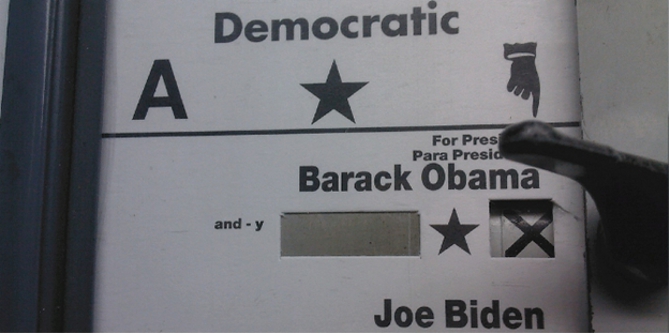Despite having existed for hundreds, if not thousands, of years in every country across the globe this dual-use building type has long gone unnoticed. This book analyses the lives and premises of 90 contemporary UK and US home-based workers from across the social spectrum and in diverse occupations. Laura Vaughan recommends readers study the book alongside the Workhome Project’s handsome website, which carries a wealth of additional material including a pattern book and information on policy and governance.
 Beyond Live/Work: The Architecture of Home-based Work. Frances Holliss. Routledge. March 2015.
Beyond Live/Work: The Architecture of Home-based Work. Frances Holliss. Routledge. March 2015.
Baker, bookbinder, box-maker, dressmaker, jeweller, architect, doctor, public house licensee, gardener, housekeeper, college porter, plumber. How many of these occupations, which appear in 19th century street directories, are taking place in homes on contemporary streets? Beyond Live/Work shows that before the industrial revolution buildings which combined work and home were practically universal. The book, written by architect and academic, Frances Holliss, brings together in a single volume a wealth of material on the historic importance and future potential of buildings that combine dwelling with workplace. This timely publication is the culmination of several years’ research into a neglected building type and Holliss’s work is already receiving increasing attention through her shorter, previously published pieces on the subject. The book’s examples from the past are not an exercise in nostalgia. At a time of changing patterns of work in the western world, it provides the blueprint for designing suitable environments for this ‘intricate mingling’ of mixed-use.
It could be argued that twentieth century modernist architecture together with modern zoning rules fixed in the building and the street a strict separation between work and home, economic productivity and domestic activity. Frances Holliss’s revelatory book demonstrates the oft-forgotten fact that mixed-use living has historically been the norm – and not the exotic or divergent activity undertaken by artists in lofts or writers in attics. The study fits in with other recent work on mixed-use buildings, notably the analysis of ‘Living over the store’ by Howard Davis. Beyond Live/Work opens with an overview of the history of the workhome. This is followed by a series of chapters which outline the architectural, urban, sociological and governance aspects of the workhome.
The book is important in its providing evidence for planners and policymakers alike, that the array of bye-laws, regulations that limit the capacity, say, of a social housing tenant to start up a business on their kitchen table are not only lacking in an understanding of how essential this building type is to architecture, but also of its importance in shaping a more workable (pun unintended) society. Holliss does not shy away from the myriad challenges of combining the public with the domestic: the smells, noise, dirt and imposition on privacy are all laid out in her chapter on “Everyday Realities”. Here she shows how these issues are managed through design or – where necessary – partial separation between work and home. Yet, most importantly, the book provides a compelling argument for the way in which more intensive use of the dwelling house has the potential to be a highly sustainable low-carbon solution.
Unsurprisingly, Jane Jacobs’ influential work on diversity is widely cited in the book. Jacobs (1961) proposed four conditions for creating city diversity, which include a variety of buildings of different types and ages, and a dense concentration of people including people resident in the district. Along with the meticulous architectural descriptions of workhome typologies, the myriad of real-life examples captured in Holliss’s ethnography provide evidence for Jacobs’ conception of public life as sustained by people doing little more than coming and going, carrying out prosaic, small-scale activities. ‘Beyond Live/Work’ demonstrates how a closer connection between work and home can strengthen local social networks, support people with caring responsibilities and indeed feed back into the local economy.
 Photo Credit: Fabio Bruna. CC-BY.
Photo Credit: Fabio Bruna. CC-BY.
Designing buildings and urban settings for mixed-use is not easy. It is not surprising that without a requirement to do so, developers prefer the apparent low-risk strategy of land use separation and zoning. What Holliss’s book provides is both a compelling reason as to why cities need to take up this challenge and also some strategies to do so. She lays out in a chapter on ‘governance’ the regulations that currently inhibit home-working from taking place. In some instances, people carry out their work covertly, for fear that they are breaking regulations, even if in some cases they are not. In other instances, working from home takes place ‘under the radar’ in order to avoid complications with a landlord, a utility company, or neighbours who may not look kindly upon non-domestic activities happening nearby. The consequences of this is a vicious cycle of unregulated activities unaccounted for and unsupported by policy.
Beyond Live/Work provides a useful corrective to the typical binary representation of suburb and city that I have critiqued elsewhere. It shows that the workhome can exist both in a suburban setting as well as in the inner city. It is the way in which it corresponds to its street setting that will differ in each spatial context. Consequently, differing types of work themselves make different physical demands on the manner in which the dwelling part of a house interacts with the work area also differs according to the type of activity. Some work can take place in near silence and in relative isolation, whilst other activities require a face to the public or regular deliveries of supplies. The author’s analysis found there to be eight sub-groups of workhome with their own specific spatial and environmental needs. Amongst these are those people whose work is inherently tied up with their position in the community, whether the school caretaker who will be a known presence on the local streets or the corner shop proprietor whose knowledge of the neighbourhood’s daily goings-on is as valuable today as it was when first observed by Jane Jacobs in the 1960s.
My only criticism is that although the illustrations are excellent, occasionally the number of images is out of balance with the amount of text. Putting this minor issue aside, the book is highly recommended. Indeed, readers might wish to study the book alongside the Workhome Project’s handsome website, which carries a wealth of additional material including a pattern book and information on policy and governance. Put together these form a highly recommended guide for architects and other built environment practitioners.
This review originally appeared at the LSE Review of Books.
Featured image credit: We Are Women (Creative Commons: BY-NC-SA 2.0)
Please read our comments policy before commenting.
Note: This article gives the views of the authors, and not the position of USApp– American Politics and Policy, nor of the London School of Economics.
Shortened URL for this post: http://bit.ly/1c30PD0
——————————————–
Laura Vaughan – Bartlett School of Architecture, UCL
Laura Vaughan is Professor of Urban Form and Society and Director of the Space Syntax Laboratory at the Bartlett School of Architecture, UCL. Her research uses space syntax to study the relationship between micro and macro scales of urban form and society, analysing both urban and ‘disurban’ space and she has led a series of UK government funded projects in this area. She is currently working with public health experts and transport engineers to conduct research into community severance and has just started a new collaborative project on ‘contested urbanism’. Her Twitter handle is: @urban_formation.






